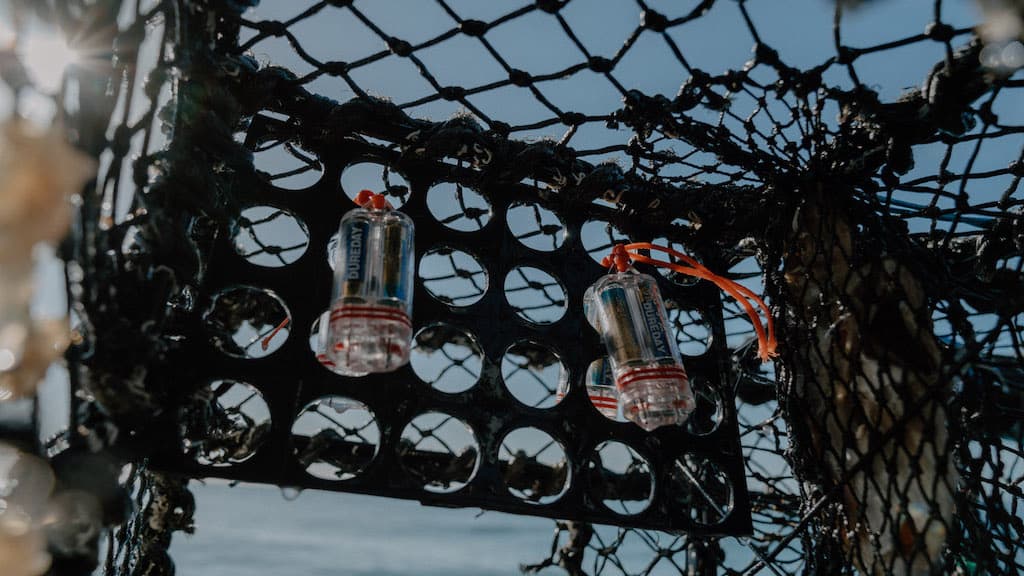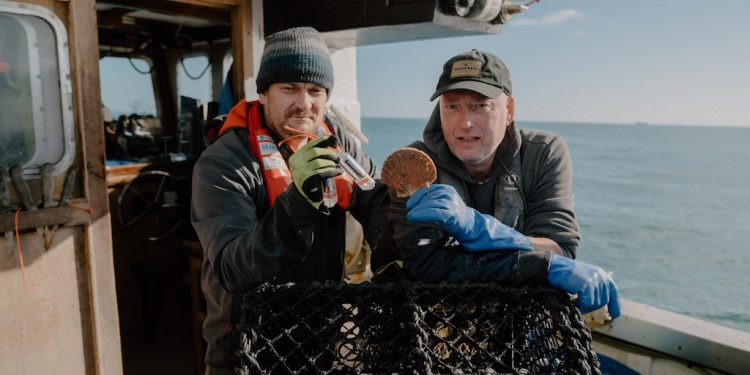A partnership between marine scientists and fishermen in England’s South West has resulted in a new environmentally friendly method for fishing scallops using innovative illuminated pots which have been dubbed ‘scallop discos’.
Most commercial scallop harvesting is carried out using dredges, seen as a high-impact method. This new approach paves the way for a new low-impact inshore fishery which could reduce the effects of scallop dredges.
Scientists from bycatch prevention technology specialist Fishtek Marine developed this while trialling PotLights which are small underwater lights used to attract crab and lobster to pots. These were invented by the Devon-based company to replace the need to use fish to bait pots.
‘The potential of this new approach to scallop harvesting is massive, offering notable benefits to the marine environment while creating a new commercial opportunity to fisheries around the world,’ said Fishtek Marine co-founder Pete Kibel.

‘Ultimately, the success of the trial is further evidence that collaboration between industry, scientists and government bodies can drive product innovation and underpin sustainable fishing efforts.’
Working with Newlyn fisherman Jon Ashworth, Dr Rob Enever and his Fishtek team discovered that the lights, combined with specially modified pots, were attracting unprecedented numbers of scallops in addition to the crabs and lobsters that Jon was targeting.
Scallops have 200 tiny eyes, so the lights proved irresistible to the shellfish.
‘I couldn’t believe my eyes! I was sceptical that it would work, but the first time we hauled the pots and saw the scallops inside we knew we had discovered something significant. It was so exciting that I could hardly sleep for a couple of nights!’ Rob Evener said.
Funding from the UK government’s Seafood Innovation Fund delivered by the Centre for Environment, Fisheries and Aquaculture Science (Cefas) and Natural England, allowed further trials in which Dr Enever’s team tested several pot designs and proved the PotLight technique consistently attracts scallops.
According to Fishtek, this discovery is just the beginning of an exciting work programme which, with further development, could transform commercial scallop harvesting.
‘This is an important project that has the potential to make a real difference to the sustainability of the scallop fishery,’ commented Suzanna Neville, Seafood Innovation Fund programme manager at Cefas.
‘The opportunity to transform commercial scallop harvesting has been made possible by providing funding for the development of early stage ideas. This is exactly the sort of innovative project that the SIF was set up to support, helping the UK lead the way in developing a sustainable seafood sector.’
With the help of local fishermen, pot makers and scientists from the Universities of Exeter and York, the team is developing two new pot designs specifically for retaining scallops attracted by the PotLights and is experimenting with different coloured lights. Each small light is powered by two rechargeable AA batteries. These are clipped inside each pot and can be used multiple times.
Results of the trials have now been peer-reviewed and published in the journal Fisheries Research.
‘The first day out was just excitement after excitement. Pretty much every pot that we hauled had scallops in them and yet every haul without lights had no scallops,’ said Three Jays’ skipper Jon Ashworth.
‘It was conclusive, there and then. To have proven that lights can be used to catch scallops has got to have some awesome implications.’
Fishtek now plans to work with other inshore fishermen around the UK to develop the scallop potting technique with the aim of establishing a commercially viable low impact fishery.
‘This is one of the most exciting research findings I have been involved with in my career,’ said Bryce Stewart, senior lecturer at the University of York.
‘We knew scallops were sensitive to light, but not that they could be attracted in this way. These findings have the potential to provide a valuable and low impact boost to inshore fisheries.’









